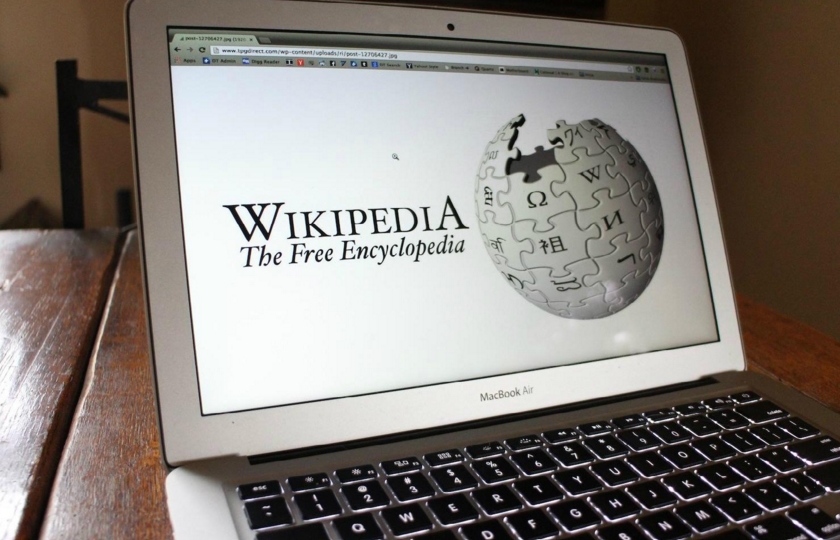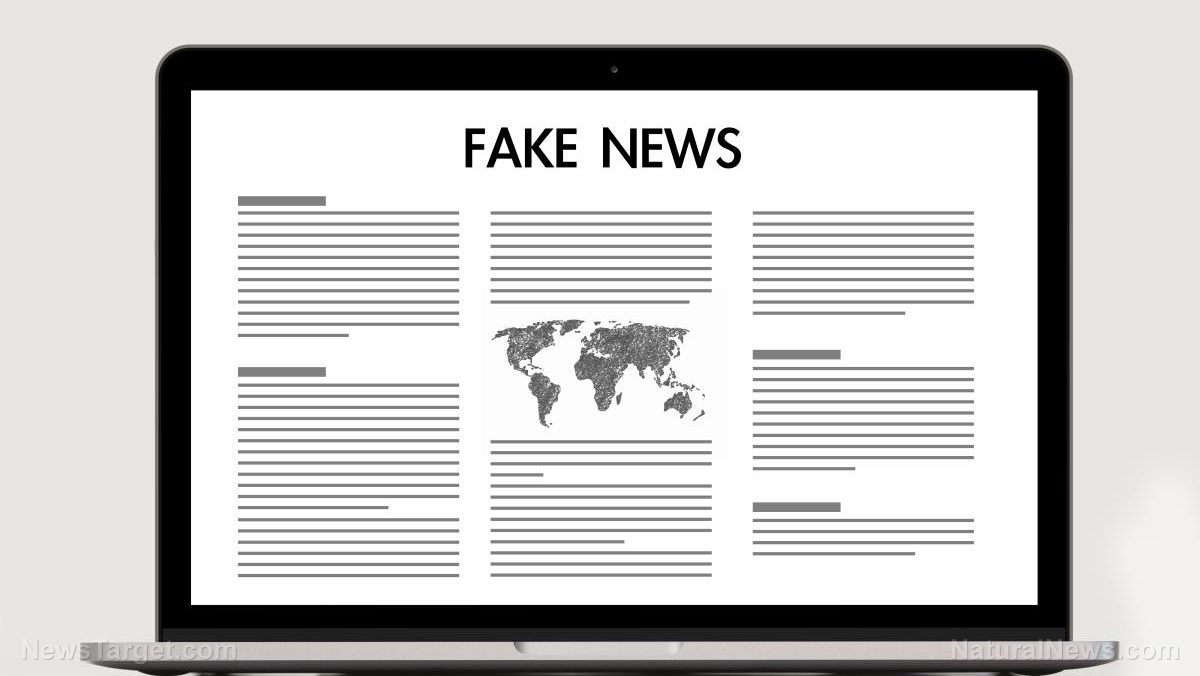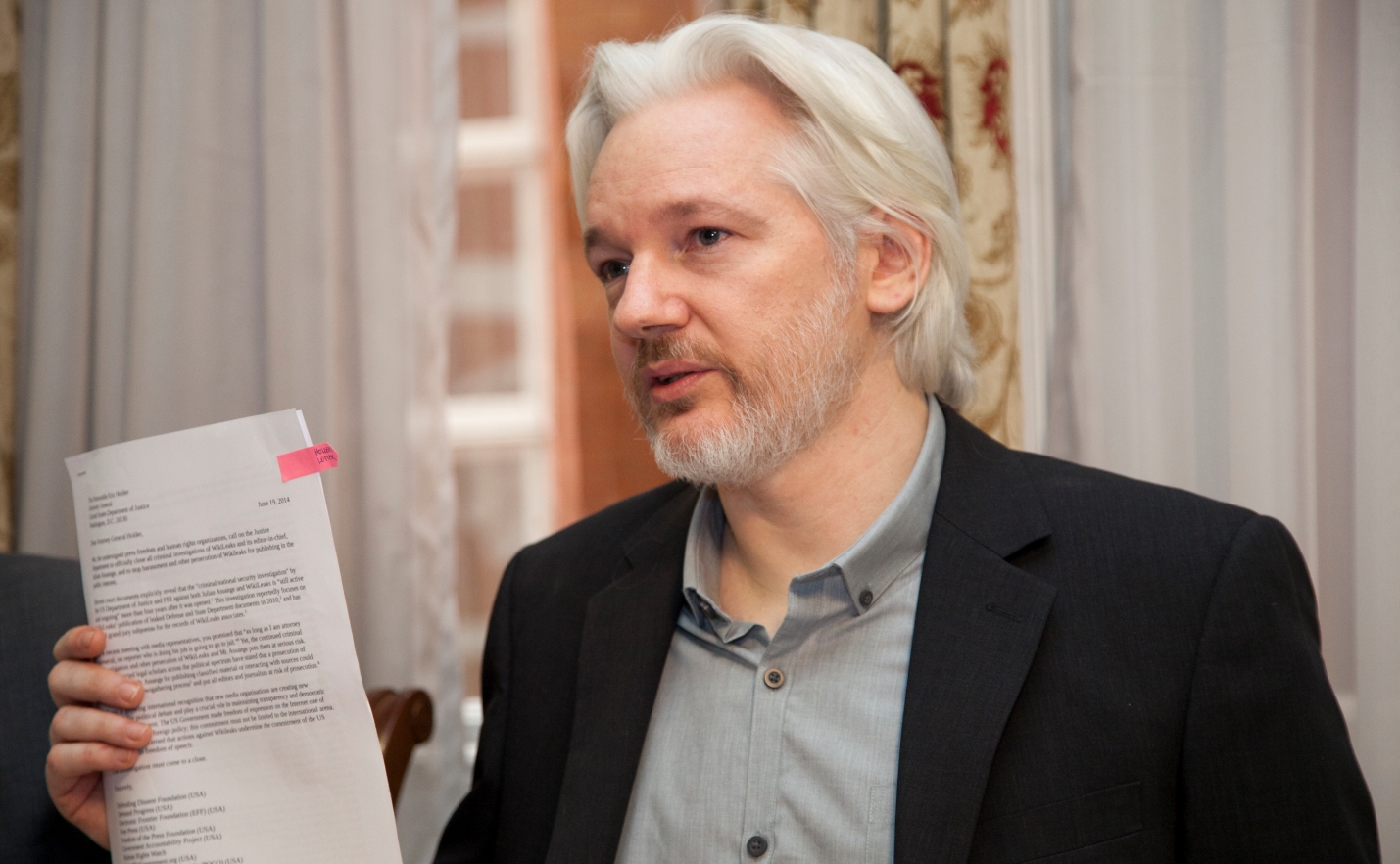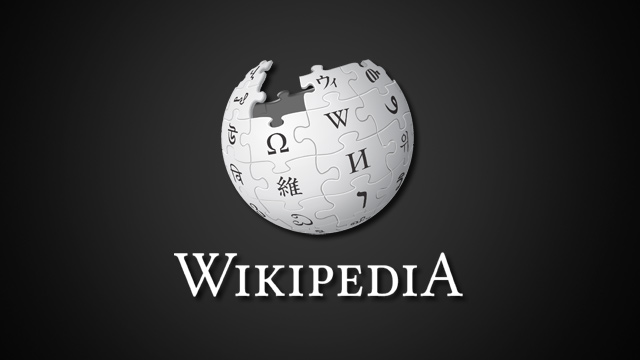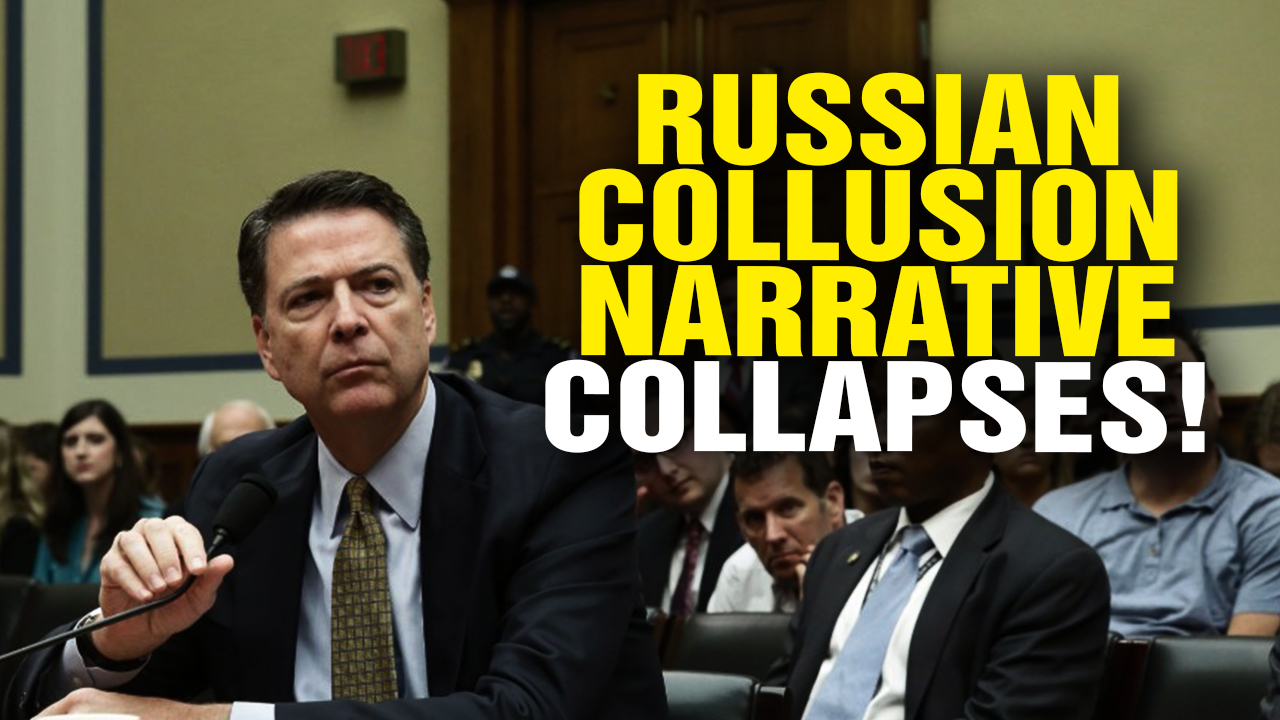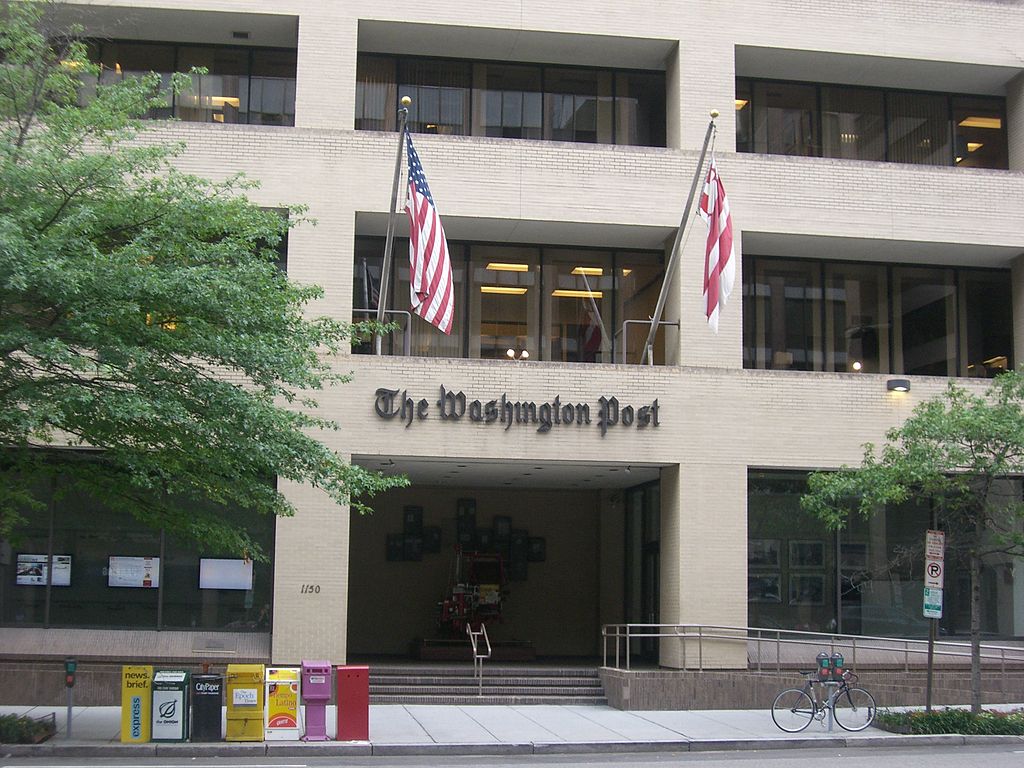Why does Wikipedia want to deprive you of Acupuncture
04/16/2019 / By News Editors

Although it is completely ignored by the mainstream media, all natural and alternative medical philosophy and therapies remain under constant attack in the United States, as well as in the UK, France, Canada, Australia and elsewhere. In addition to the pharmaceutical industry’s profitable interests tied to our federal health agencies (FDA, CDC, etc.) to undermine natural healing, Wikipedia and an army of Skeptic healthcare mercenaries are also making every effort to deprive you of access to non-drug based therapies, which lie outside their narrow paradigm of what qualifies as medicine.
(Article by Richard Gale and Gary Null republished from PRN.fm)
As we have outlined in previous articles to counter Skepticism’s, Science Based Medicine’s (SBM) and Wikipedia’s criticisms and assaults on Complementary and Alternative Medicine (CAM), including homeopathy, naturopathy and energy medicine, sound science is clearly not on their side. The late astrophysicist Stephen Hawking noted, “The greatest enemy of knowledge is not ignorance, it is the illusion of knowledge.” Hawking’s statement accurately summarizes the dominant paradigm of medical materialism being promoted by Wikipedia. How often do we hear Skeptics and SBM advocates use repeatedly the ill-informed argument that natural healing modalities simply don’t make sense or are implausible? And this is sufficient reason to discredit them? Such hypotheses, veiled in the fantasy of being valid conclusions, has no place in real science nor for substantiating any medical truth, especially to relegate all CAM therapies to the trash bin of “pseudo-science.” In effect, non-scientific subjective opinions play an important role in SBM’s gold-standard “scientific method.”
Modern medicine’s illusory self-perception about its reductionist view of the body, mind and health is largely due to the failure of today’s conventional medical schools. Dr. David Sackett, the American-Canadian physician who pioneered Evidence-Based Medicine (EBM) and founded its first departments at McMaster and Oxford universities, wrote,
“Half of what you learn in medical school will be shown to be either dead wrong or out of date within five years of your graduation; the trouble is nobody can tell you which half. The most important thing to learn is how to learn on your own.”[1]
As a result, speaking before a European Parliament conference convened to tackle the problem of rising disease epidemics and the failure of conventional medicine’s response, British cardiologist Dr. Azeem Malhotra stated that “honest doctors can no longer practice medicine.”[2] The epidemic of serious illnesses such as cancer, diabetes, obesity, Alzheimer’s and dementia, autoimmune diseases, etc. is coupled with an equally dangerous epidemic of misinformed doctors and medical fundamentalists in the SBM community promoting questionable science and touting false accolades as the final voices of healthcare and the treatment of disease.
Wikipedia relies upon the Skeptics’ treasure trove of biased medical research. Today this enormous body of literature, according to Dr. Malhotra, is plagued with biased funding of research for profit, biased reporting in medical journals, biased patient literature, biased media reporting, prevalent commercial conflicts of interests, and a gross failure to teach doctors how to understand health.[3] And now Wikipedia has become a contagion infecting its readership with these biases regarding patient health and safe, effective alternatives.
Traditional Chinese Medicine (TCM) has also come under Skepticism’s brutal attacks on Wikipedia. TCM is a complete system, which includes distinct theories of human biology and disease, diagnostic methodologies, acupuncture and moxibustion, herbal medicine, dietary protocols, Qigong and other energy-based therapeutic techniques. Over the course of 5,000 years, it has developed and evolved into becoming the standard form of medicine practiced throughout Greater China, although in recent decades it has become increasingly interchangeable with and practiced alongside conventional Western medicine. Unlike modern Western medicine, TCM focuses primarily on identifying and treating the cause of an illness rather than relying upon a reactive treatment to relieve symptoms only. In this article, we will focus upon acupuncture, the most prevalent, controversial and well-known form of TCM practiced in American clinics.
Wikipedia Skepticism discredits TCM outright. “Scientific investigation,” the encyclopedia states, “has not found histological or physiological evidence for traditional Chinese concepts such as qi, meridians and acupuncture points. The TCM theory and practice are not based upon scientific knowledge.” The entry also cites a flawed editorial in the respected journal Nature that accuses TCM as “fraught with pseudoscience” and that its treatments have “no logical mechanism of action.”[4]
Concerning acupuncture, Wikipedia relies upon the personal opinions of SBM’s founder Stephen Novella, who calls it a “theatrical placebo.”[5] Novella ignores positive outcomes from acupuncture clinical studies as nothing more than “false positives” or perhaps due to “biased study designs, poor blinding.” This is an excellent example of the kind of psychological manipulation Wikipedia Skepticism is best known for: suggesting ideas that are solely the subjective opinion of Wikipedia editors with no credible research to support it. It SEEMS to be the “placebo effect.” Or there SEEMS to be “noise” within a study.[6] Wikipedia doesn’t offer an alternative theory or body of evidence to potentially substantiate acupuncture research’s positive results. This is a common characteristic of Wikipedia Skepticism and its efforts to promulgate a single reductionist model of medicine that denigrates and condemns natural and cheaper medical therapies that challenge its deceptive biases. When Wikipedia does acknowledge important medical research or studies confirming the effectiveness of CAM, it more often than not counters it with SBM’s and Stephen Barrett’s Quackwatch converse opinions. For example, citing a meta-analysis published in the Journal of the American Medical Association about acupuncture’s effectiveness for treating certain kinds of pain, it is written off as having “negligible clinical significance.” Or citing a Cochrane review noting the “high quality evidence” for acupuncture treating various conditions of pain, it is immediately countered with other cherry-picked studies promoting Skepticism’s addiction to magically conjuring the “placebo effect” excuse that they find unsettling.
As an aside, Skeptics and the SBM crowd convey little if any understanding about the more recent discoveries and theories for placebo and nocebo effects. Consequently their frequent misuse of the term. According to Dr. Fabrizo Benedetti, head of the Department of Neuroscience at the University of Turin in Italy and an internationally recognized expert in the placebo effect, “There is not a single placebo effect, but many, 3 with different mechanisms in different diseases and in different systems.” He also notes very recent experimental evidence that seems to indicate that certain genes are activated by certain placebo responses, such as ”genetically controlled modulation of amygdala activity [in the brain] by the neurotransmitter serotonin, which is linked to placebo-induced anxiety relief.”[7]
Wikipedia’s entry for “Chinese Herbology” largely reproduces much of the same text, sometimes verbatim, found under “Traditional Chinese Medicine.” Evidently, the same Skeptic editor or group of editors control the page. Chinese herbology is described as “fraught with pseudoscience” without a “logical mechanism of action.” The page falsely argues that the research has “little or no rigorous evidence of efficacy.”[8] Again, Skeptics are experts at sleight of hand and rational deception. The actual study being cited from the South African Medical Journal only looked at African medicinal herbs and had nothing to do with Chinese botanicals. The South African study’s abstract states, ”We conducted systematic reviews of eight widely used African medicines and identified only one plant, Pelargonium sidoides, which has been extensively studied.”[9] Hence the study’s conclusion of “little or no rigorous evidence of efficacy.” How this could have passed Wikipedia’s editorial vetting process is astounding. Apparently Wikipedia is perfectly fine with blatant distortion and misrepresentation of medical literature by whatever twist of the imagination necessary to advance Skepticism’s SBM charade.
The South African study is an example of a common bait-and-switch ploy used by Wikipedia’s Skeptic editors and is in direct violation of Wikipedia’s own written editorial standards. Frequently research is cited or referenced that is unrelated or only distantly related to the subject in order to reinforce personal biases.
However, far more brutal than Wikipedia is the condemnation of acupuncture, Chinese medicine and practically everything that falls under the rubric of non-conventional medicine within the SBM community. What is immediately notable to people who visit SBM’s primary website and read posts by its leading figures such as Stephen Novella, David Gorski and Harriet Hall is a deep hatred and disdain for all health modalities that stand outside of their narrow belief system of what constitutes reliable medical practice.
Typical of Skeptic writing, their words and circular logic are riddled with self-righteous indignation. For example, SBM outright denounces acupuncture as:
- A pre-scientific superstition
- Lacks a plausible mechanism (similar wording found in Wikipedia)
- Claims for efficacy are often based upon a bait-and-switch deception
- Clinical trials show that acupuncture doesn’t work.[10]
Stephen Novella takes the Skeptics’ illusion of medical knowledge and belligerent denialism regarding everything that can’t be touched, heard or smelled to an even lower level:
“Despite thousands of studies, there isn’t a single indication for which real acupuncture has been shown to work to a high degree of confidence. At this point I would say that acupuncture should be abandoned as a scientific concept. It is a failed hypothesis that has added no real knowledge to our understanding of health and disease.”[11] Novella wishes us to assume he has thoroughly reviewed these “thousands of studies,” which leaves us wondering when he has time to accomplish his university responsibilities at Yale. In fact the National Institutes of Health Pubmed database for peer-reviewed medical literature lists over 28,200 studies dealing with acupuncture, including many on the effectiveness of acupuncture in veterinary medicine. And in the words of Novella’s SBM colleague David Gorski, “We write about acupuncture a lot here on SBM because it’s a form of quackery that is arguably the most “respectable” and accepted among academic medical institutions and “conventional” doctors.”[12]
Based on the latest available figures for acupuncture’s use in the United States, a multiinstitutional National Health Interview Survey published in 2007 estimated that over 14 million Americans have or continue to receive acupuncture. Over a five year period, its popularity has slowly increased by 2 percent.[13]
Acupuncture is based upon a whole systems model of human anatomy that is dependent upon the Chinese concept of qi or chi as a vital energy that pervades the cellular structure and is systemically interrelated with the body’s bioactivity. It is complementary to the latest discoveries in systems theory which lie outside the realm of 5 SBM’s competency. The theory of qi is not limited to Chinese medicine, but also found in various permutations and definitions across cultures, such as prana in Indian medicine and elan vital among the Stoic philosophers during the Classical Mediterranean period. Skeptics are correct in stating that without positing the existence of qi, acupuncture and other forms of Chinese medicine such as Tai Chi Chuan and Qigong have no foundation. The Skeptics argument is that qi simply doesn’t exist. End of story.
One of the low points of SBM denial of real scientific endeavors, which goes to the heart of acupuncture, energy medicine, homeopathy and other therapeutic systems more closely aligned with quantum physics — or what Paul Levy calls the “crown jewel” of the sciences — is its unequivocal repudiation of the existence of a force outside of a mechanistic perspective of the human body.[14] Therefore Novella writes that “centuries of advancement in our understanding of biology has made the notion of life energy unnecessary… Within science, the vitalists lost the debate over a century ago. Without chi, there is no underlying basis for acupuncture as a medical intervention.”[15] This fundamental fallacy in SBM Skepticism’s gnarled reasoning and distorted reinterpretation of the history of biology goes well beyond the scope of this article because it takes us into a strange world where consciousness solely exists within the functions of neurobiology, neural synapses, and biomolecular activity. For this reason, we also find Skeptical culture entertaining the most hardened atheistic materialists. They share a cult-like mentality of exclusivity commonly found in extreme religious cults and fundamentalist sects. However, in the largely unconscious Skeptical worldview, life is utterly meaningless because every traditional medical system that has given meaning to human and cultural life for many millennia are deconstructed, mocked and tossed into the trashcan as mere superstition and foolishness. We are all in fact, according to the Skeptic catechism, nothing more than mechanical machines. You are analogous to the computer you are viewing to read this article. What Skeptics fail to comprehend, let alone consider, is the cornerstone of all quantum physics and science; that is, the world appears one way and exists in another. Consequently, Skeptics have remained stuck in the 18th century Cartesian universe that was later deconstructed by Einstein’s law of relativity and quantum theories developed by Einstein, Max Planck, Niels Bohr, Werner Heisenberg among others. For Newton, a healthy human being was little more than a well-crafted clock. SBM’s biomedical model is firmly grounded in Cartesian mechanistic 6 thought, which remains a conceptual construct in modern medicine today. Consequently the current medical paradigm espoused by Skeptics should be properly labeled as mechanistic medicine. The Skeptics’ definition of health is limited to the absence of disease. Although mechanistic medicine has much to offer, it nevertheless remains only a sliver of what can and should be known about health in relation to other scientific disciplines. And until conventional medicine can relate and benefit from physics and somatic psychology behind health and disease, it will continue to fail as epidemics worsen and new environmental illnesses increasingly appear.
Scientific Evidence of Acupuncture Points and Meridians
Unquestionably, qi and its patterns of activity operating through meridians or channels and tubules traversing the body are perhaps the most mysterious concepts to support the validity of acupuncture; yet the general, conservative consensus is that qi and meridians mustn’t exist because they cannot be observed or measured. Since Skeptics rely solely on the absence of direct proof for qi as the cause, or one cause, of an effect, they must also reject the existence of gravity since there is no solid proof of gravitation’s existence as a “field” unto itself either. It is the same argument in both cases, although nobody can deny gravity’s impact on our body.
Dr. Albert Szent-Gyorgyi, a biochemist and Nobel Prize Winner in Medicine is perhaps best known for his discovery of ascorbic acid. His work on cellular respiration and identifying the activity of fumaric acid later led to the important discovery of the Krebs cycle, the citric acid chemical reactions used by all aerobic organisms to release stored energy. Unlike today’s conventional medical researchers and followers of SBM’s reductionism, Gyorgyi delved into the world of quantum physics and biophysics, befriending Dr. Zoltan Bay, head of the US Department of Nuclear Physics in the 1950s. He noted that “In every culture and in every medical tradition before ours, healing was accomplished by moving energy.” During the later years of his research, Gyorgyi focused on the role free radicals played in the causes of cancer. His conclusion was that cancer is a problem at the biophysical level of molecular activity. [16] In short, he observed or intuited a non-measurable phenomenon that medical sages and healers have ascertained and known for thousands of years. However, with the enormous advances in modern technology to peek into the hidden worlds of the 7 qualitative operations and causes underlying the quantitative effects of energy, there is no conclusive scientific evidence that qi and the meridians form the basis of acupuncture’s movement of energy. This remains an area of biophysics still rich for future exploration and discovery. Nevertheless, there is far more known than SBM Skeptics want us to believe and that Wikipedia would permit us to know.
Biophysics continues to be a growing scientific endeavor revealing amazing discoveries in the body’s energetic activities, yet it has yet to penetrate the walls of evidence-based medicine. Dr. Robert Becker, a pioneering researcher in electrophysiology and electromedicine at the State University of New York in Syracuse was recognized as a leader in warning about the dangers of Electro-Magnetic Frequencies in high voltage power lines to human health. His research proved that our bodies hold direct currents of electrical charges that can be measured at the skin’s surface.[17] This is analogous to what TCM contributes to the concept of qi moving in the acupuncture meridians.
In 2013, researchers at the Shanghai Institute of Applied physics published their findings of clear visual images of acupuncture points with Computerized Tomography (CT) technology with synchroton radiation using state-of-the-art 3D imaging. Viewing both classical acupuncture points and other points outside the meridians, sharp anatomical distinctions were noticed. Acupuncture points showed “a higher density of micro-vessels and greater involuted microvascular structures,” whereas nonacupuncture points did not show these properties.[18] Other technologies including Magnetic Resonance Imaging (MRI), infrared, LCD thermal photography and other CT imaging technologies have added further information about acupuncture points’ and meridians’ unique structures.
Another study coming out of China using an amperometric oxygen microsensor found and measured oxygen pressure variations at different locations on the wrist, which contains several critical acupuncture points in the TCM system. After looking at the photo images published in the study, the acupuncture points for the lung, pericardium and heart meridians are clearly recognizable.[19] Moreover, the measurements were taken without needles, therefore the points were observed in their natural inactive state absent of any stimulation. In several later studies, the physical location of acupuncture points revealed “vessel-like structures made of calcitonin gene related peptide (CGRP) 8 neuro-fibers at the acu-sites. CGRP accordingly plays a crucial role as a neurotransmitter and modulator in the central nervous system and as a vasodilator that is physically located at acupuncture points. The discovery was made using a laser confocal microscope. The importance of this finding is that not only did it locate certain acupoints, but it identified a biochemical mechanism that supports acupuncture’s efficacy on human health.[20, 21] This may biologically explain why acupuncture is so effective in the treatment of migraines.[22]
There are many other laboratory studies proving the existence of acupoints and some of their biological properties; however, another noteworthy body of research conducted by Dr. Morry Silberstein at Curtin University of Technology in Australia found that acupoints display a unique neuroanatomical structure containing both myelinated and unmyelinated afferent nerve fibers that are nowhere else found in the human body. Using confocal light microscopy, Silberstein concluded that acupuncture may incise afferent unmyelinated axonal branch points, disrupting both neural transmission to the spinal cord and crosstalk along meridians while simultaneously stimulating larger, myelinated afferents, thus explaining both the immediate and long-lasting effects of acupuncture.”[23]
In a more recent 2017 study conducted by LA BioMed, one of world’s foremost independent, non-profit research institutes on the UCLA Medical School campus, researchers discovered that acupuncture when accompanied by heat (the practice of moxibustion in TCM) elevated nitric oxide levels in the skin at the point sites. Nitric oxide is associated with the release of “analgesic or sensitizing substances” while increasing blood flow.[24]
Although TCM relies upon the idea of qi, which is not accurately translated into Western scientific terminology, the research is clear that acupressure points and meridian channels exist and are associated with biochemical activities. Moreover, underpinning our body’s biochemical events are electrical changes along certain patterns/lines or meridians that can be detected with modern scanning and imaging technologies. Unlike conventional medicine, which holds no essential value for the prevention of disease, if a condition can be detected at an energetic level before developing into a full-blown 9 illness, then reversing the cause of a potential pathology can start much sooner and promises to be far more effective in sustaining health than conventional drug protocols.
For over half a century, considerable laboratory research has been conducted to try to physically identify the meridian channels of qi that serve as the anatomical map in TCM’s medical system. Back in 1991, Russian scientists led by physicist Dr. Kaznachejew at the Institute for Clinical and Experimental Medicine in Novosibirsk in the former Soviet Union reported finding light conductivity traveling beneath the skin’s surface layer and these light channels only corresponded to TCM’s meridian lines. The study employed a photometric unit magnified by a photoluminescence microscope with a photomultiplier. It is worth noting that Soviet scientists customarily held an honest curiosity to explore biological phenomenon associated with medicine and health that laid outside the conventional medical model. Unlike the US, the integrity of Soviet medical research, regardless of how flawed some of its methodology may have been at times, was never jeopardized by private pharmaceutical commercial interests. In fact, the entire field known as “light medicine” largely originated in the USSR.[25]
Fourteen years later, using infrared technology to map the body’s biophotonic spectral range after lightly stimulating acupoints, Dr. KP Schlesbusch at the International Institute of Biophysics in Neuss Germany identified “light channels” that appeared identical to the meridians in TCM medical theory. His conclusions stated that “it is likely that living matter is not in the ground state but permanently electronically excited.”[26] Years of research on mapping and measuring meridian functions at the Bioengineering department at Tatung University and Taipei Medical University in Taiwan concluded that “meridians are open channels of interstitial fluid seems to be accepted based on evidence-based research.” The hydrodynamic of waveform interstitial fluid flow of the meridians and acupuncture points could explain the electrical currents, acoustic and thermal responses, optical transmissions, and isotope passages in the meridians.”[27]
Contrary to SBM claims, according to the National Institutes of Health, acupuncture has been shown to be effective either alone or in combination with conventional medical practice for treating nausea caused by surgical anesthesia and chemotherapy, dental pain, addiction, headaches, menstrual cramps, fibromyalgia, myofascial pain, 10 osteoarthritis, low back pain, carpal tunnel syndrome, asthma and may also help with rehabilitation after a stroke.[28] Johns Hopkins University School of Medicine additionally lists gastritis, anxiety and depression, insomnia, male and female infertility, sciatica, neurogenic bladder dysfunction and Parkinson’s, bronchitis, prostatitis, and impotence.[29] In 2012, Memorial Sloan-Kettering Cancer Center conducted a metaanalysis involving almost 18,000 patients and concluded, “Acupuncture is effective for the treatment of chronic pain and is therefore a reasonable referral option. Significant differences between true and sham acupuncture indicate that acupuncture is more than a placebo.”[30] Another example. Dr. Richard Niemtzow, Editor-in-Chief of the peerreviewed journal Medical Acupuncture developed “Battlefield Acupuncture” that started to be taught to physicians deployed to Afghanistan and Iraq in 2009. The quick insertion of tiny semi-permanent needles in specific acupoints provides immediate pain relief to wounded soldiers. According to Niemtzow, a consultant to the Surgeon General of the Air Force, “this is one of the fastest pain attenuators in existence…. The pain is gone in five minutes.” Unfortunately, Wikipedia and its experts in the SBM Skeptic community believe all of this is nonsense and proves TCM’s motivation to scam patients. Gorski calls Niemtzow’s battlefield acupuncture “a zombie that wouldn’t die.”[31]
The good news is that acupuncture is rapidly become more widely accepted in conventional clinical institutions and hospitals. “I think the benefit of acupuncture is clear, and the complications and potential adverse effects of acupuncture are low compared with medication,” says Dr. Lucy Chen, a board-certified anesthesiologist, specialist in pain medicine, and practicing acupuncturist at Harvard University-affiliated Massachusetts General Hospital. In Western medical terms, Chen finds that acupuncture adjusts our neurotransmitters, hormone levels or our immune system.[32]
Conclusions
As we have noted repeatedly in this series, Wikipedia has aligned itself with today’s far Right of medical conservatism represented by SBM Skepticism. Psychologically, conservative thinking fails to deal with complexity thoughtfully and constructively and therefore it is limited to judging the world within a tight-knit spectrum of opposition, likes and dislikes, good and bad. While working in the laboratories at Woods Hole, Dr. SzentGyorgyi witnessed a polarity and division within the larger scientific community he had worked in for over five decades. He realized that true scientific discovery “must be, by definition, at variance with existing knowledge.” In an article written for the publication Science in 1972, he noted that the scientific status quo was diametrically at odds with this standard of science. He quotes an old saying that “a discovery is an accident finding a prepared mind.” Skeptics are far from having “prepared” minds and make every effort to claim that such a mind doesn’t exist, only their linear rational thinking. Identifying with those Gyorgyi called “scientific dissenters” — those with the fortitude, curiosity and courage to reach out towards “the fringes of knowledge” and beyond the parameters of the dominant scientific culture — he directly challenged scientists who resist threats to their cherished beliefs. The latter group he called Apollonians, researchers who were only concerned with strengthening and perfecting their paradigm. The followers of Apollonian medicine usually receive the most grants and funding, win the support of bureaucrats, and hence their undeserved influence and dominance over medical discourse. Scientific dissenters, on the other hand, those who Gyorgyi called Dionysians, relied upon “intuition and [were] more likely to open new, unexpected alleys of research.” He also noted that the future of our species will depend upon scientific progress and it will be the Dionysian scientists and practitioners, those who don’t shudder in fear and dread over other medical disciplines that they erroneously perceive as enemies, including TCM, homeopathy, energy medicine, etc., who will assure the progress of science.[33]
Another example of SBM’s Apollonian character is their sharp criticisms against medical schools introducing CAM therapies, including acupuncture, into their curriculum. However what most frightens them is that the medical establishment’s gradual acceptance of CAM will increase funding for further research into the mechanisms for how and why CAM is successful. Nevertheless, although SBM and Wikipedia is fighting a losing battle against the advancing tides of scientific and medical discovery and exploration, their influence should not be underestimated or taken for granted. Despite the wonderful advances in modern medicine, particularly in better understanding the body’s biology, public satisfaction with conventional medical practice continues to erode rapidly. There are many reasons but perhaps one of the most realistic ones is the enormous disparity between cost of healthcare and the lack of its effectiveness to actually cure diseases. Moreover mechanistic medicine’s adverse effects are frequently more life-threatening than the cure. Perhaps another failure at a more humanistic level 12 is that SBM’s mission is to turn medicine into a hard, cold science based upon biochemistry and completely absent of any philosophy of life, which has served as the underlying premise of traditional medicine, especially TCM and acupuncture, for thousands of years.
SBM has become the expression of a narrowly-defined scientific ideology claiming an authoritative, religious-like status that philosophers and renowned, pioneering scientists have warned about for over a century. And the greater danger is that SBM’s leaders are not content with simply debating the evidence for or against CAM therapies. Rather, they hope to influence policy, and under an SBM regime, medicine and the future health of the public will rapidly descend into a Dark Age of totalitarian healthcare, more illness and iatrogenic deaths. And sadly, Wikipedia is all too willing to be SBM Skepticism’s most popular mouthpiece.
Read more at PRN.fm
Tagged Under: acupuncture, Alt-Left, alternative medicine, bias, Big Tech, Chinese medicine, Collusion, corruption, deception, disinfo, fake news, left cult, lies, mainstream media, medical philosophy, propaganda, tech giants, Wikipedia, Wikipedia scam

